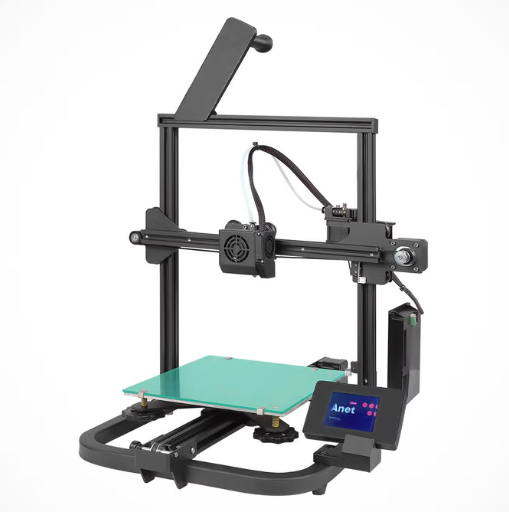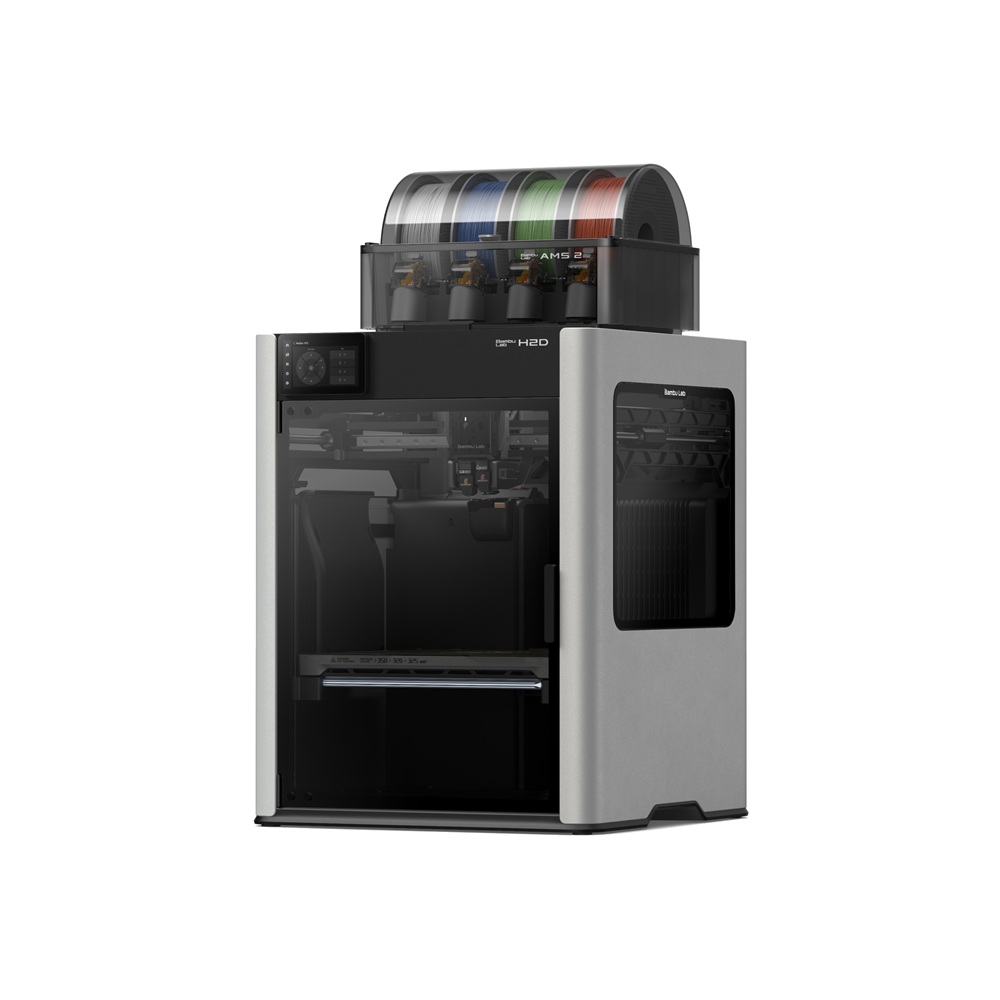Compare A8 V2 vs H2D
Comparison between the best 3D printers
Choose the best 3D printer at the best price. The cheapest 3D printers are here.
Buy a 3D printer here with 3D Fila.
 |
 |
|
| Model | A8 V2 |
H2D |
| Printing Material | Filament | Filament |
| Buy Filament for Anet A8 V2 | Buy Filament forBambu Lab H2D | |
| Estimated price | $129,00 | $1899,00 |
| Manufacturer | Anet | Bambu Lab |
| Release Year | 2021 | 2025 |
| Print Volume [mm] | 220x220x250 | 350x320x325 |
| Printer Size [mm] | 428x441x486 | 492x514x626 |
| Weight [kg] | 6,2 | 42,3 |
| Power Loss Recovery | NO | YES |
| Enclosed printer | NO | YES |
| Bed Leveling | Manual | Automatic |
| Filament End Sensor | NO | YES |
| Bed type | Heated | |
| Power supply system | Bowden | Direct Drive |
| Standard nozzle | 0,4 | 0,4 |
| Maximum Nozzle Temperature [°C] | 230 | 350 |
| Maximum Bed Temperature [°C] | 120 | |
| Maximum printing speed [mm/s] | 150 | 600 |
| Filament holder | YES | YES |
| Camera for supervision | NO | NO |
| Recommended filaments | PLA | PLA, PETG, ABS, ASA, TPU, PVA, Nylon (PA) |
| Recommended slicers | Cura, Simplify, Slic3r, IdeaMaker | Bambu Studio |
| Maximum Resolution [mm] | 0,1 | 0,01 |
| Processor | ||
| Display | Display touchscreen 2,8'' | Touchscreen 5'' |
| Power Supply | 110/220V / 250W | |
| Connectivity | SD / USB | Wifi, Bambu bus, Cartão SD |
| Operating systems | Windows, Mac, Linux | Windows, Mac, Linux |
| Date of registration in the system | 2022-11-10 | 2025-03-31 |
| Release date | 2021 | 2025 |
| Extra features | The Anet A8 V2 is a Cartesian-XZ type 3D printer with a build volume of 220 x 220 x 250 mm, Ender 3 design and V-slot assembly. It has a 32-bit motherboard and touchscreen interface, promising ease of use. It uses open source firmware and has thermal failure protection. It stands out for its cable organization and the absence of a heated bed, focusing on energy savings and PLA printing. It comes with an external power adapter, aiming at greater safety, especially for beginners and educational use. | Bambu Labs H2D combines high-speed 3D printing with a chamber heated up to 65 °C, dual extrusion with automatic nozzle switching, an AMS for filament drying and exchange, and AI sensors that detect failures. It offers optional laser and digital cutting capabilities, features intelligent calibration through computer vision, vibration control, enhanced fire safety, and real-time camera monitoring. |
| Support for multiple colors and materials (AMS and CFS) | NO | YES |
Notes * |
||
| Cost-benefit | 6 / 10 | 7 / 10 |
| Hardware | 0.6 / 10 | 8 / 10 |
| Tela | . | . |
| Print volume | 3 / 10 | 4 / 10 |
| Performance | 1 / 10 | 5 / 10 |
Conclusion |
| In comparing the Anet A8 V2 and the Bambu Lab H2D, there are significant differences that cater to varying user needs and budgets. The A8 V2, priced significantly lower, is ideal for beginners and educational purposes, offering a basic yet functional printing experience with manual leveling and a limited print volume. Although it lacks advanced features, its simplicity and affordability make it a suitable choice for those starting in 3D printing. In contrast, the Bambu Lab H2D stands out as a premium option, justifying its higher price with a plethora of advanced features, including automatic bed leveling, enhanced material compatibility, high printing speeds, and an enclosed chamber for improved print quality. Its user-friendly design, including a larger touchscreen and sophisticated connectivity options, caters to more experienced users and professionals seeking high-quality prints with minimal downtime. Ultimately, choosing between these two models boils down to budget and intended use. The Anet A8 V2 is a great cost-effective choice for beginners, while the Bambu Lab H2D meets the demands of users requiring advanced capabilities, higher performance, and greater material versatility. Each printer has its strengths, making them suitable for different segments of the 3D printing community. |

